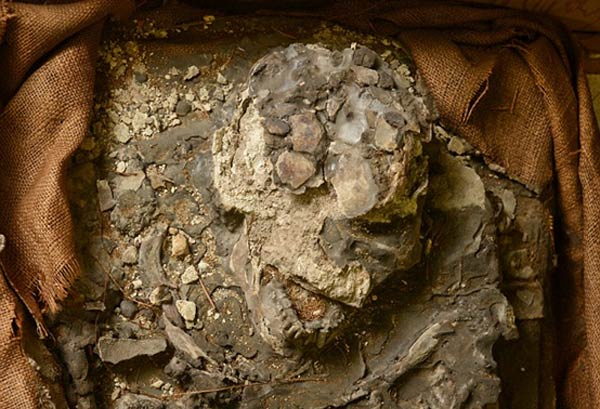Scientists at the Penn Museum in Philadelphia are currently uncovering ancient skeletons hidden away for decades. Recently, museum staff rediscovered a 6,500-year-old human skeleton that had been stored in boxes in the basement for 85 years.

At the Ur site in Iraq, archaeologists discovered a 6,500-year-old skeleton. The skeleton was carefully coated in wax on-site and lifted intact along with the surrounding soil. Stored in a storeroom, the wooden box containing the skeleton lacked identifying numbers or a catalogue card. However, recent attempts to digitize some of the museum’s old records revealed new information about the mysterious box’s history and the skeleton inside, affectionately named “Noah.”
The human remains inside the box were originally excavated between 1929 and 1930 at the Ur site in modern-day Iraq by Sir Leonard Woolley and his team of archaeologists from the Penn and British Museums, according to the records.
Woolley’s excavation is best known for uncovering the famous Mesopotamian “royal cemetery,” which included hundreds of graves and 16 tombs laden with cultural artifacts. However, the archaeologist and his team also discovered graves that preceded Ur’s royal burial ground by about 2,000 years.

A lightweight plaster mixture is applied over the covered skeleton, the 6,500-year-old human remains discovered at the Ur site in Iraq, to protect it during shipping. The silt beneath the skeleton is already being removed to make room for the carrying board. In a flood plain, nearly 50 feet (15 meters) below the surface of the site of Ur, the team found 48 graves dating back to the Ubaid period, roughly 5500 B.C. to 4000 B.C.
Although remains from this period were extremely rare even in 1929, Woolley chose to recover only one skeleton from the site. He coated the bones and surrounding soil in wax, boxed them up, and shipped them to London, then Philadelphia.

The teeth of the 6,500-year-old skeleton are well-preserved, as seen in this view of the upper body and skull. A set of lists outlined where the artifacts from the 1929 to 1930 dig were headed — while half of the artifacts remained in Iraq, the others were split between London and Philadelphia.
One of the lists stated that the Penn Museum was to receive a tray of mud from the excavation, as well as two skeletons.
However, when William Hafford, the project manager responsible for digitizing the museum’s records, saw the list, he was puzzled. One of the two skeletons on the list was nowhere to be found.
Further research into the museum’s database revealed the unidentified skeleton had been recorded as “not accounted for” as of 1990. To get to the bottom of this mystery, Hafford began exploring the extensive records left by Woolley himself.

After obtaining additional information, including images of the missing skeleton, Hafford approached Janet Monge, the Penn Museum’s curator of physical anthropology. However, Monge, like Hafford, had never seen the skeleton before.
That’s when Monge remembered the mysterious box in the basement.
When Monge opened the box later that day, she said it was evident that the human remains inside were the same ones listed as being packed up and shipped by Woolley.

The skeleton, she mentioned, likely belonged to a male, 50 years or older, who would have stood somewhere between 5 feet 8 inches (173 centimeters) to 5 feet 10 inches (178 cm) tall.
Researchers at the Penn Museum have nicknamed the rediscovered skeleton “Noah” because he is believed to have lived after what archaeological data suggests was a massive flood at the original site of Ur.
New scientific techniques, not yet available in Woolley’s time, could assist scientists at the Penn Museum in determining much more about the time period to which these ancient remains belonged, including diet, ancestral origins, trauma, stress, and diseases.